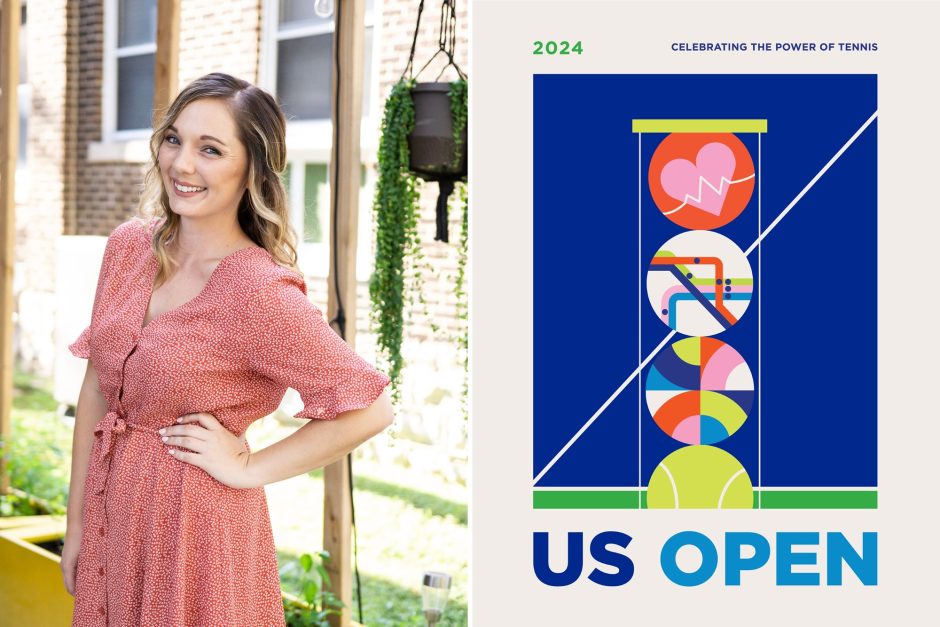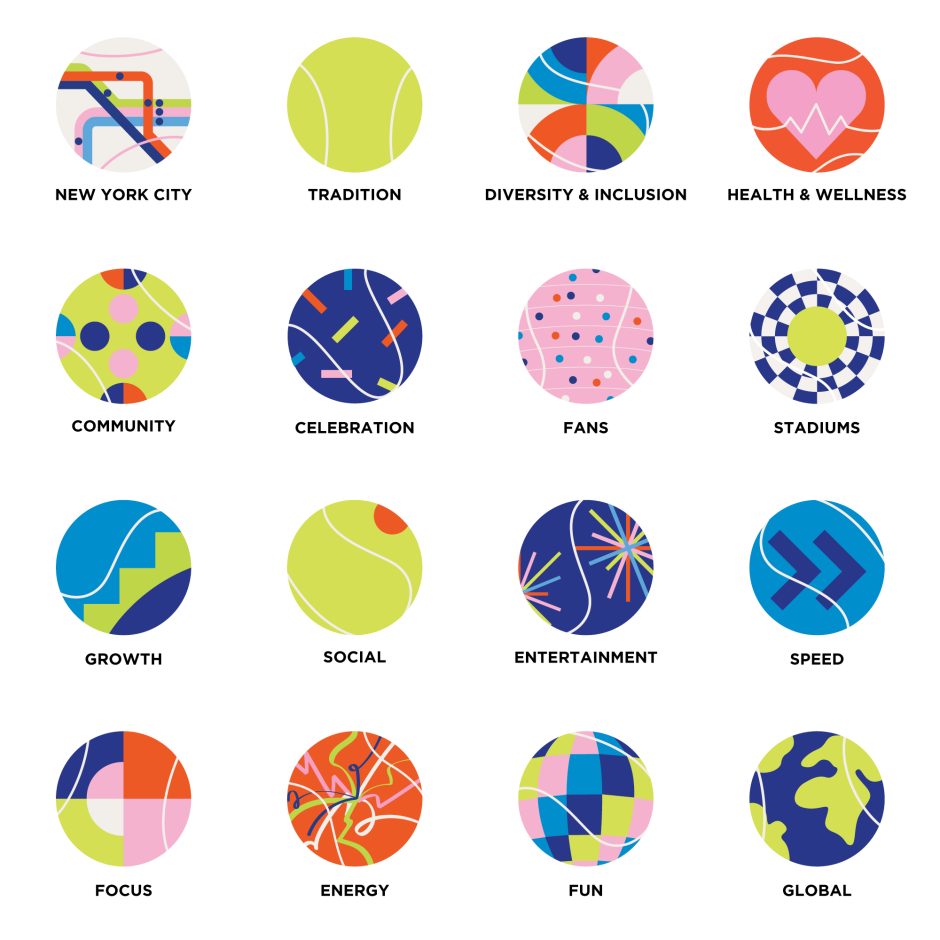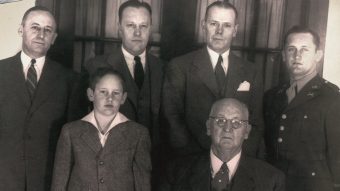By Eric Stann

Aug. 20, 2024
Contact: Eric Stann, 573-882-3346, StannE@missouri.edu
In the years since she graduated from the University of Missouri, Chelsey Farris, B.S. H.E.S. ’13, has explored various career paths, from managing a teen clothing store and selling art on cruise ships to working in the theater and tech industries.
So, when the United States Tennis Association (USTA) reached out to Farris with an offer to design the theme art for the 2024 U.S. Open Tennis Championships, she said it was a “dream” opportunity that she couldn’t pass up.
Next week, as tennis players and fans walk the grounds of the U.S. Open in New York City, Farris’ designs will be on display everywhere they look, from posters and programs to T-shirts and coffee mugs.
Farris said a committee of USTA officials asked her to come up with three initial concepts to represent this year’s U.S. Open theme, which is “celebrating the power of tennis.”
“I was brought in toward the end of the process, and I only had 10 days before the committee was scheduled to vote,” Farris said. “I didn’t know how many artists were being considered or what they were presenting. So, I made sure to involve the U.S. Open team from the get-go and follow up with them regularly. I wanted to get them involved in the process, so they felt a sense of ownership and excitement for my design.”
Farris said it came as a relief when she learned her designs had been chosen.
“In looking for an artist for this year's U.S. Open theme art, we wanted to find someone who could not only design a beautiful poster but help us take a big message and simplify it into a piece of art,” said Carrie Ehorn, director of pro tennis marketing at USTA, in an interview with St. Louis Magazine. “I was impressed with the work Chelsey had in her portfolio and could tell she may be a nice fit due to her examples of structured composition, use of shape and use of vibrant colors. Throughout the process, she brought those traits into her designs for the U.S. Open, which helped craft the amazing work we see today.”

Invoking an emotional reaction
Farris wanted to invoke an emotional response in tennis players and fans alike when they see her tennis ball-themed design.
“Design exists to create a user experience or journey for people,” Farris said. “I wanted to represent different aspects of the sport of tennis by creating vignettes inside each ball. To me, when you love a sport, the feelings you get aren’t just about playing it. As a former soccer player, I loved soccer, and I wanted to emulate all the feelings and emotions that I get when I see a soccer ball. That way, when a tennis player or fan sees my designs, they can also think about all the aspects of the sport of tennis that they love.”
Farris was required to incorporate New York City, the host city for the U.S. Open, into her overall design. So, she looked at what iconic city landmarks had been used in past U.S. Open artwork. She decided to go in a different direction by designing a map of the New York subway system within one of the tennis balls.
“I aimed to represent the connection that most people have for getting to and from the event,” Farris said. “Also, I wanted to celebrate the designers who have come before me, so this work pays homage to Massimo Vignelli — the original designer who created the official NYC subway map.”
While the U.S. Open will not be the first time Farris has visited New York City, she looks forward to seeing her designs physically come to life while embracing the exciting atmosphere of the U.S. Open during the opening ceremony.
A transformational experience
When Farris arrived at Mizzou in 2009, she was already familiar with the campus thanks to her parents. Both attended Mizzou, and in fact, she moved into the same dorm — Hatch — where her parents first met.
Farris said she built a solid foundation for her budding graphic design career at Mizzou, from her consumer psychology class in the Department of Textile and Apparel Management to the business acumen she learned while earning her business minor.
“I think both aspects of my college career have served as a cornerstone for my career by allowing me to be successful, especially with running my own design business,” Farris said.
Looking back, Farris said she’s grateful for every moment of her self-described transformational experience at Mizzou.
“I definitely evolved as a person during my four years at Mizzou,” Farris said. “I got to figure out my likes and dislikes; I was able to try new things; and I was able to grow and learn while exploring who I want to be in life. I love that my four-year college experience was on a campus that really supports the growth and transformation of young people.”



